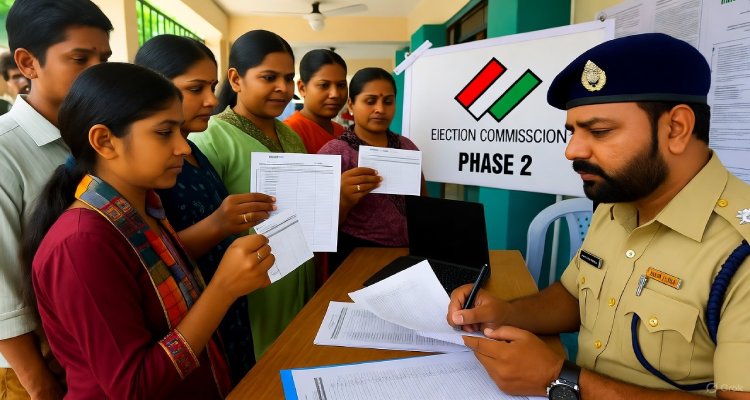How Frontier Technologies Can Transform India’s Agricultural Landscape
Frontier technologies such as digital twins, precision farming, AI, and climate-resilient tools are reshaping India’s agriculture for enhanced productivity, sustainability, and rural prosperity.
Introduction: The Next Green Revolution
India’s agricultural heartland stands on the brink of a digital renaissance. With over half of its population reliant on farming, the sector faces a decisive juncture. As economic aspirations rise toward Viksit Bharat by 2047, a new vision for the nation’s farmlands is emerging—one powered not by fertilizers or tractors alone, but by digital twins, agentic AI, and precision tools that reimagine the very concept of cultivation.
On November 3, NITI Aayog’s Frontier Tech Hub unveiled a crucial roadmap titled Reimagining Agriculture: A Roadmap for Frontier Technology Led Transformation. The document charts a bold vision for harnessing cutting-edge technology to drive agricultural productivity, improve sustainability, and increase farmer incomes across India’s diverse rural landscape.
Context & Background: Why a Paradigm Shift is Urgent
Agriculture forms the backbone of India’s economy—employing nearly 46 percent of the national workforce and feeding over 1.4 billion people. Yet, despite producing close to a billion tonnes of food annually, the sector’s productivity remains uneven, constrained by small landholdings, depleting water tables, and intensifying climate shocks.
Over 86 percent of Indian farmers are smallholders, owning less than one hectare of land. Their economic vulnerability is amplified by resource-intensive practices, limited mechanization, and inadequate access to credit or insurance. In 2022 alone, the country lost more than $18 billion due to post-harvest inefficiencies—losses that often push already fragile farms into debt cycles.
For India to reach developed-nation status by 2047, its per capita income must grow fivefold. The roadmap argues this cannot occur without an equivalent surge in farm incomes and sustainability. The need for a transformative, technology-led shift is no longer optional—it’s existential.
Main Developments: The Frontier Tech Roadmap
The NITI Aayog roadmap categorizes farmers into three archetypes—Aspiring, Transitioning, and Advanced—each requiring context-specific solutions. From low-cost sensor kits for smallholders to AI-driven crop models for large farms, the aim is to align innovation with diversity.
Among the frontier technologies outlined in the roadmap are:
-
Digital twins: Virtual simulations of farms and crops that help predict outcomes, optimize input usage, and reduce risks in real time.
-
Precision agriculture: Leveraging drones, sensors, and satellite imagery to improve yield forecasting and reduce resource wastage.
-
Agentic AI and robotics: Automating labour-intensive tasks such as weeding and spraying, freeing farmers to focus on strategic operations.
-
Climate-resilient seeds and data-driven irrigation: Enabling better crop survival amid droughts and unpredictable monsoon cycles.
-
Advanced mechanization and biological innovations: Integrating sustainable machinery and bioeconomy processes for circular farming models.
A crucial differentiator of this roadmap is its emphasis on customisation. India’s farmers range from tech-curious micro cultivators to globally connected exporters. One-size-fits-all solutions are destined to fail; tailored technology adoption is key.
Expert Insight: From Policy to Practice
According to a senior agricultural economist at the Indian Council for Agricultural Research, “India’s greatest challenge isn’t technology shortage but adoption lag. Digitally inclusive ecosystems—where a farmer can interpret a drone image or trust an AI recommendation—are essential for real impact.”
Experts note that existing government initiatives like the Digital Agriculture Mission, Kisan Drone Scheme, and the National Mission for Sustainable Agriculture have already laid critical groundwork. Yet, scaling frontier technologies demands a wider ecosystem of training, rural connectivity, and financing instruments. Public-private collaboration will be central—enabling startups and agritech firms to innovate locally while aligning with national goals of sustainability and export growth.
Impact & Implications: Towards Resilient, Profitable Farming
Frontier technologies promise to close India’s information gap—the silent constraint that has long stifled smallholder productivity. With IoT-linked soil health cards, hyperlocal weather forecasting, and transparent market data, even marginal farmers can make informed choices, reduce costs, and command better prices.
The economic impact could be transformative. Estimates suggest India’s bioeconomy alone could reach $300 billion by 2030, reinforcing agriculture as a key growth engine. Beyond GDP metrics, the real outcome would be resilient livelihoods—farmers who can withstand climate shocks and participate meaningfully in digital markets.
Equally important is the environmental dividend. Smart irrigation, regenerative soil practices, and circular agri-waste management powered by technology could drastically reduce water overuse and greenhouse emissions while improving long-term soil fertility.
Conclusion: Cultivating the Future
India’s agrarian future hinges not merely on higher yields but smarter, sustainable, and equitable growth. Frontier technologies—if deployed inclusively—can help achieve that balance.
The Reimagining Agriculture roadmap envisions an agricultural transformation where villages become data-rich innovation nodes and farmers operate with the precision of digital entrepreneurs. Achieving this vision will require coordinated action across ministries, industries, and communities—but the potential payoff is immense.
As India aims for developed-nation status, its farms may once again lead the next industrial revolution—this time, born of code, sensors, and intelligent ecosystems.
Disclaimer: This article is intended for informational purposes only and does not represent official policy or investment advice. All data and opinions cited are based on credible government and expert sources available as of November 2025.










